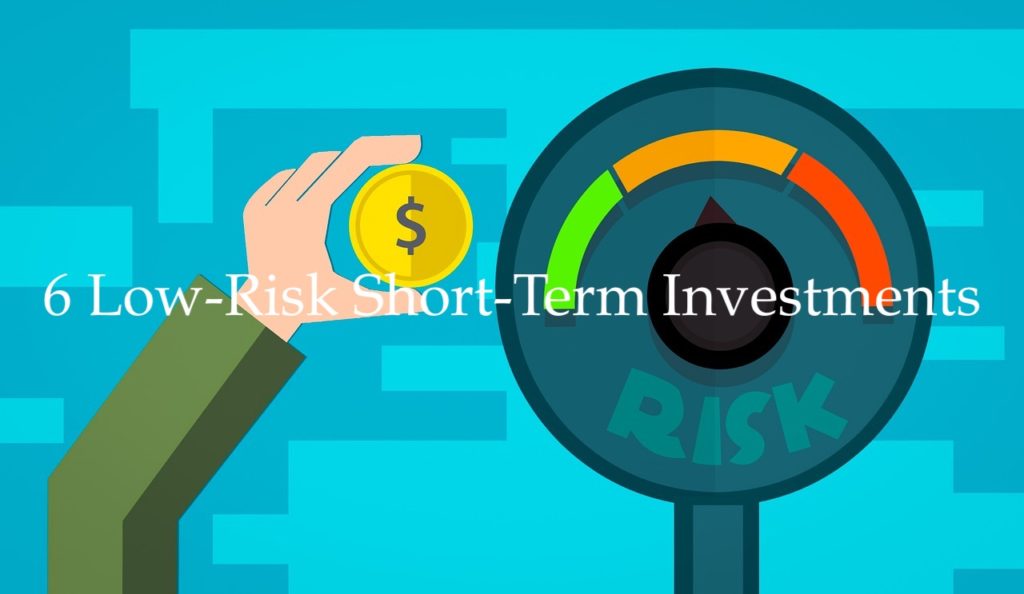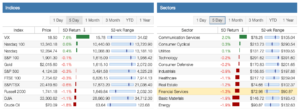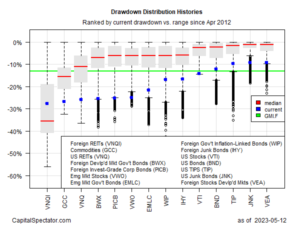
6 Low-Risk Short-Term Investments
Growing up, I had a savings account earmarked for going to college. Most of my babysitting and part-time job money went in and didn’t come out until I needed it for college expenses. However, I also had a Christmas Club Account. With my savings passbook, I went to the bank and made my deposit each month. I think I put in $20 a month! The bank paid out the interest each month, but you couldn’t withdraw it without penalty until December. Christmas Club Savings accounts were created to help families save for holiday expenses. The early withdrawal penalties encouraged people to leave the money untouched until December. They are not very common these days. At the time, it gave me a lump sum of money to spend at Christmas time without touching my college savings. It helped me budget and control spending as a teen. I didn’t know it at the time, but a twelve-month Christmas Club Savings account was a short-term investment.
Today, there are more short-term investments to choose from. Short-term investments offer the opportunity to build your wealth without tying your money up for long periods. Investors are rewarded with better returns than just stashing cash in a traditional savings account. Short-term investments can help you save for specific financial goals like buying a car, going on vacation, or saving a house down payment. Short-term investments can also be used to save for a particular dollar amount, like saving $10,000 in a year.

SaveBetter.com* is a platform that allows consumers to find FDIC-insured high-yield savings products. The SaveBetter platform curates a selection of savings products from a network of community banks in the US.
You have only to open one account with SaveBetter.com* and you gain access to different savings products. Interest rates are several times the national average for high-yield savings accounts, money market deposit accounts (MMDAs), and certificates of deposit (CDs).
What are Short-term Investments?
In general, short-term investments are made for less than five years. Sometimes called temporary investments, these financial investments cashed out quickly. The time frame of short-term investments can be as little as three months! Some examples of short-term investments are certificates of deposit (CD), government bonds, high-yield savings accounts, I-bonds, money market accounts, municipal funds, and treasury bills.
Short-term investments are more liquid and safer than long-term investments, especially if they are insured by the Federal Deposit Insurance Corporation (FDIC). They are suitable for short-term goals that are nearer in the future since you can access the money and profit sooner.
What are Long-term Investments?
Long-term investments are ones that let you grow your funds to meet future long-term goals. These goals could be five years away, ten years away, or decades in the future. Long-term investments are typically more volatile and riskier. Investors accept more risk to gain a higher return on investments. Some examples of long-term investments are stocks, bonds, and real estate. Long-term investments would work well for college savings and retirement.
6 Low-Risk Short-term Investment Products
Certificate of Deposit (CD)
Banks and credit unions offer certificates of deposit (CD). CDs are types of savings accounts where you commit to keeping your money invested for a set amount of time, which can be any length from three months to five years. During this time, you earn a pre-agreed amount of interest. At the end of the term, when the CD matures, you gain back your money plus the interest earned. Banks set a minimum amount, and it needs to be deposited all at once. Most CDs are federally insured, which makes them a safe investment product.
CD interest rates tend to be higher than typical savings accounts because you cannot withdraw your money without a penalty. Generally, the interest is higher the longer the term. There could be a wide variety of interest rates offered, even at the same bank. Currently, CD interest rates average 0.05% compounded daily at my bank, while free savings offer 0.01% compounded monthly. They even have a special seven-month CD that earns 0.20%. Online banks may offer better rates than brick and mortar banks, so it pays to have due diligence if you open a CD as a low-risk savings tool.
The FDIC posts maximum allowable rates and rate caps monthly for bank products on their website. Today, the national average is 0.09% for a 6-month CD, 0.13% for a 12-month CD, and 0.22% for a 48-month CD, as of this writing. The SaveBetter* platform has 13-month high-yield CDs with rates of 0.65% APY.
High-yield Savings Accounts
A high-yield savings account is simply a savings account that pays well above traditional savings accounts. Traditional banks are currently paying 0.01% in interest. A quick internet search of banks that offer high-yield savings accounts shows that some are now offering 0.50% interest! Requirements about deposits, fees, and access vary according to individual banks, so it pays to read the fine print before setting up an account.
High-yield savings accounts do have some restrictions from the federal government about access and transfers, which are essential to note, especially if you intend to use it short term. High-yield savings accounts are FDIC insured for up to $250,000 per customer and $500,000 for joint accounts.
Affiliate
- Higher interest rates on money market deposit accounts and fixed-term CDs from SaveBetter.com.
- Choice of community banks including Patriot Bank, Ponce Bank, Continental Bank, and The State Exchange Bank.
- Please read the terms and conditions. Dividend Power is an affiliate of SaveBetter.com.
Top Offers (read the terms and conditions, interest rates change periodically)
- High-yield Savings Account: 0.56% APY
- MMDA: 0.55% APY
- 13-Month CD: 0.65% APY
I-Bonds
I-Bonds are U.S. savings bonds created with inflation in mind. These bonds protect the value of your investment from inflation because their interest rates are adjusted to keep up with rising prices. I-Bonds are exempt from state and local taxes. I-Bonds have a maturity of 30-years but can be cashed after holding them for one year. However, you forfeit three months of interest if you cash them out before five years. The ability to cash them early makes them a potential short-term investment. They can be purchased at TreasuryDirect.gov.
Due to high inflation, I Bonds are paying 7.12% through April 2022. It may be an excellent time to buy I Bonds if you think inflation will remain high and interest rates are trending up.
Money Market Deposit Account (MMDA)
Banks or credit unions offer money market deposit accounts, which are interest-bearing. MMDAs pay a higher interest rate than regular savings accounts. They often offer debit cards and checks to access your money. However, they also come with restrictions that make them more restrictive than a traditional checking account. Accounts typically have limited transactions, a higher minimum deposit, and a requirement to keep the account balance above a specific level. Monthly fees are imposed if the balance goes below the minimum level.
Like high-yield savings accounts, MMDAs are FDIC insured for up to $250,000 per depositor per bank. It is important to note that according to the FDIC, the insurance maximum of $250,000 is per depositor, per insured bank, for each account ownership category. For joint accounts, the FDIC insures up to $500,000. Because of this, if an investor has over this amount in an ownership category, they may want to open an additional bank account elsewhere. You can find MMDA rates as high as 0.55% at SaveBetter.com*.
Don’t confuse money market deposit accounts with money market mutual funds. Money market mutual funds are considered low-risk, but they are not FDIC insured. They are mutual funds invested in short-term government or bank debt like US Treasuries and CDs. Deposit insurance does not cover money market mutual funds.
Municipal Bonds
States, cities, counties issue municipal bonds (munis) and other local governments to fund capital projects and pay for everyday expenses. When you purchase a municipal bond, you are lending money to the issuer in return for regular interest payments and the return of the principal. The term of short-term bonds is one to three years.
Although municipal bonds are not as secure as United States Treasury bonds, the default rate is relatively low. According to a Moody’s Investors Service study released in July 2020, “the five-year all-rate cumulative default rate (CDR) on municipal bonds through the study period (1970-2019) decreased a tiny bit to 0.08% (1970-2018: 0.10%) and remains very low”. This low default rate makes them a solid short-term investment.
Treasury Bills
A Treasury bill or T-bill is a government bond that matures in less than one year. A government bond is a fixed income security that earns a fixed amount of interest for the bond’s duration. You can purchase government bonds at less than face value. When the bond matures, you collect the face value. The difference between what you paid and the face value is your interest. The interest income from Treasury bills and other United States government bonds are exempt from local and state taxes, but not federal taxes. When government bonds are purchased, they raise money to operate the government and pay down government debt.
Government bonds, including Treasury bills, are considered secure because they are unlikely to default. The federal government or one of its agencies issues bonds. Investors buy Treasury bills and other government bonds to diversify their investments. They can help balance out more volatile investments. TreasuryDirect.gov, banks, and private brokers sell government bonds and T-bills.
Why Would You Want to Use Short-term Investments?
Short-term investments are an excellent opportunity to earn a little more interest than traditional savings accounts but not tie your money up for years. The extra money earned could help you reach goals like saving for a house down payment, buying a car, establishing an emergency fund, or saving for a wedding. The stability of short-term investments can help balance out riskier investments you may have. A mix of short-term and long-term investments helps create a balanced investment portfolio without putting your eggs all in one basket.
Thanks for reading 6 Low-Risk Short-Term Investments!
You can also read How to Save $10,000 in a Year by Christine Seaver.
Author Biography: Christine Seaver is a freelance writer that writes about personal finance, budgeting, and debt. She works as a bookkeeper by day and a cookie baker at night. Hobbies include gardening and watching her chickens.
Here are my recommendations:
If you want a multiple FDIC-insured high-yield savings products to choose from, read my Review of SaveBetter. Note that I am an affiliate of SaveBetter.
If you are interested in an excellent resource for DIY dividend growth investors. I suggest reading my Review of The Sure Dividend Newsletter. Note that I am an affiliate of Sure Dividend.
If you want a leading investment research and portfolio management platform with all the fundamental metrics, screens, and analysis tools you need. Read my Review of Stock Rover. Note that I am an affiliate of Stock Rover.
If you would like notifications as to when my new articles are published, please sign up for my free weekly e-mail. You will receive a free spreadsheet of the Dividend Kings! You will also join thousands of other readers each month!
*This post contains affiliate links meaning that I earn a commission for any purchases that you make at the Affiliates website through these links. This will not incur additional costs for you. Please read my disclosure for more information.
Published at Tue, 08 Feb 2022 04:09:42 -0800




